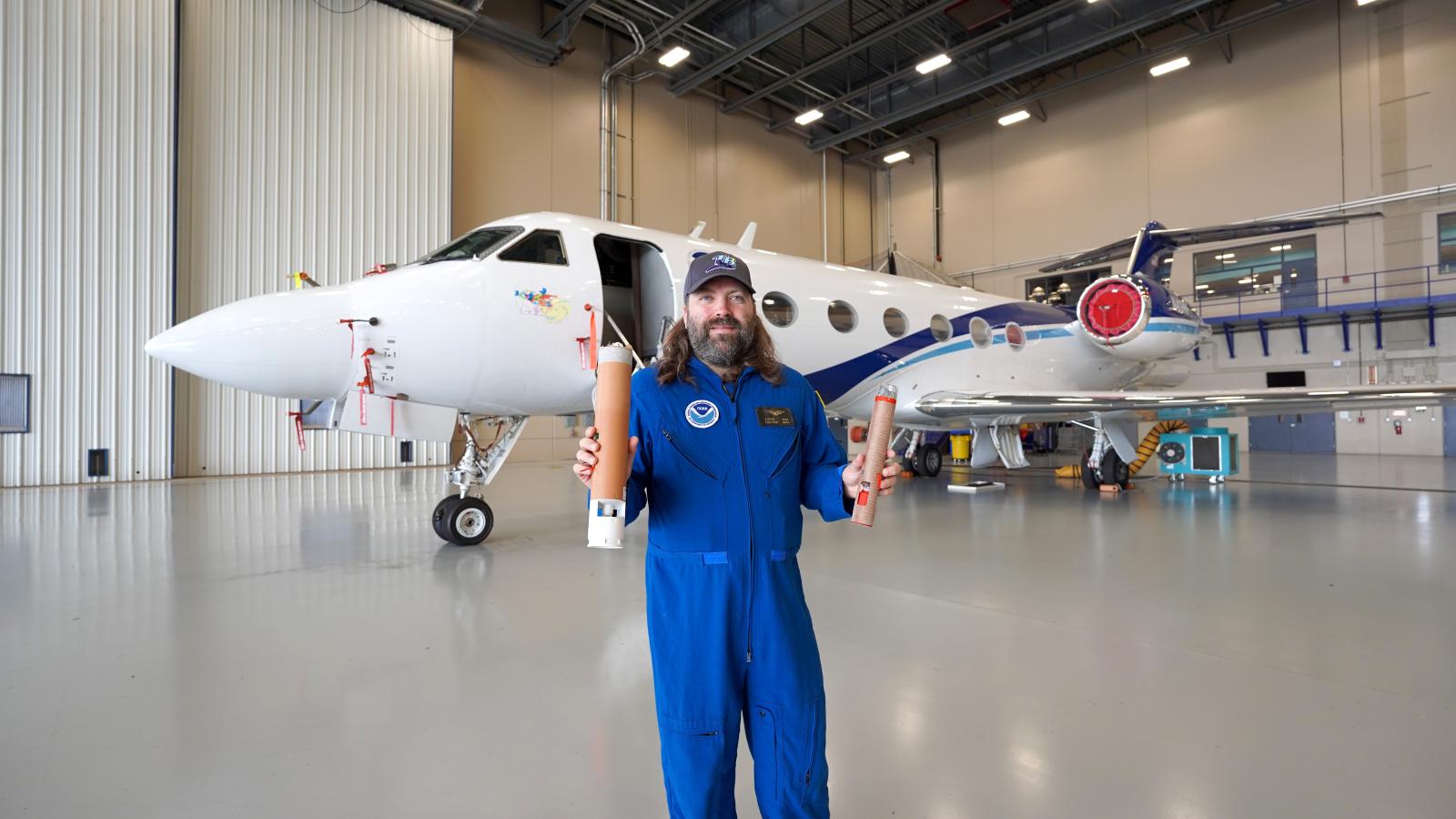
Have you ever wondered how hurricane hunters collect data on tropical cyclones? One way is by dropping expendable meteorological instruments out of aircraft, like the dropsonde.
Dropsondes
The most commonly used type of expendable is the dropsonde. GPS dropsondes measure vertical profiles of atmospheric temperature, pressure, humidity, and wind speed as they fall from the aircraft to the surface. They are equipped with a small parachute that slows their descent and maintains vertical orientation. The dropsonde transmits data by radio four times a second to the aircraft until it reaches the surface of the ocean.
Dropsonde data provides critical information to the forecast models used to predict storm track and intensity. The data collected informs forecasters about the environment within and around a tropical cyclone. This helps improve forecasts and contributes to better preparedness by communities in the storm’s path.
In addition to tropical cyclones, NOAA aircraft deploy dropsondes during a wide variety of NOAA research missions. They are also used to gather data for research on atmospheric rivers, arctic heat fluxes, and winter storms over the ocean.
Dropsondes have been in use for decades, and NOAA is continuing work to improve them. Recent technological advances have made dropsondes lighter and less expensive. The next step forward in the future of dropsonde technology is the minisonde.
Minisondes
The transition from larger dropsondes to more compact minisondes was driven by a blend of technological advancement and practical considerations.
Technologically and meteorologically, dropsondes and minisondes are essentially identical. The primary distinctions lie in the smaller form factor of minisondes and enhanced reliability of their deployment mechanism.
Currently, dropsondes have a ribbon wrapped around the top of the device which unravels as it drops from the plane. This pulls the cap off the dropsonde and pulls the parachute out to slow the descent and keep the device vertical. On rare occasions the ribbon does not unravel, resulting in erratic, fast-falling dropsondes. The crew on the aircraft can quickly identify this issue and deploy a backup dropsonde.
Minisondes are released through a magnetic field, which triggers the resistor holding the cap to release. The cap then springs off and the parachute comes out, resulting in more reliable deployments.
The new NOAA G-550, which is expected to be operational in the spring of 2025, will be equipped with an automated launcher designed specifically for minisondes. The automated launcher will allow crews to launch more minisondes in a shorter amount of time, providing researchers with a higher-resolution understanding of the atmosphere. NOAA has decided to enable all of its hurricane hunter aircraft to accommodate the minisondes. In the P-3 aircraft, a sleeve can easily be inserted into the launch tube to switch between the traditional dropsondes and the minisondes.
Expendability
Much like the name suggests, expendables are designed for a single-use and are not recovered after deployment. The dropsondes and minisondes are designed to be as compostable as possible, and sink when they reach the surface of the water. Although the expendables are not able to be reused, there is currently no other way to safely collect the data. It is dangerous for aircraft to fly at the low altitudes the dropsondes can sample. The data is crucial for reliable storm forecasting and atmospheric research, protecting lives and property while furthering our understanding of the earth.
Main image: Electronics Engineer Steven Paul holds a standard dropsonde (left) and a minisonde with NOAA's Gulfstream IV-SP in the background. Credit: Sophie Talbert/NOAA
United States

